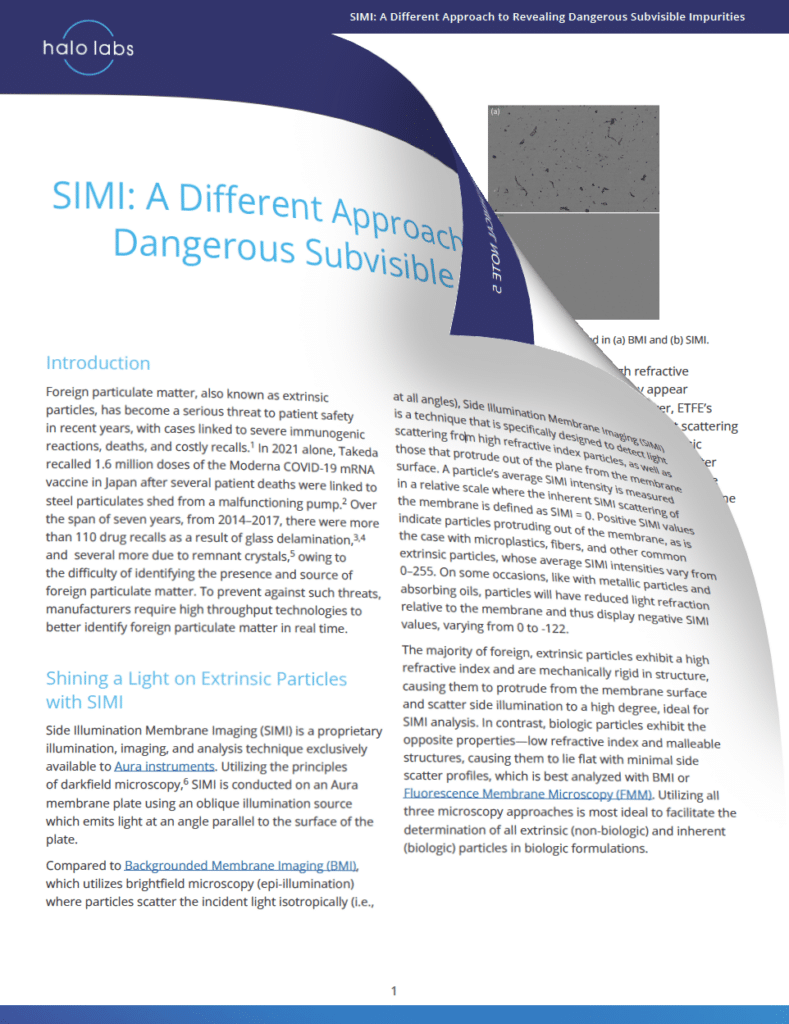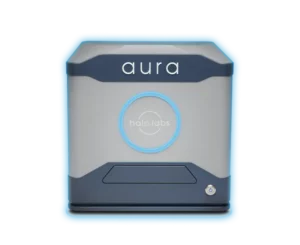Identification of Stable Cell and Gene Therapeutics and Characterization of Subvisible Aggregates
In all biologics, subvisible aggregates are a critical quality attribute and key indicator of product stability. Here we present the…
Read MoreHalo U: FMM 201 and SMI 301: Subvisible Particle Identification using Side-Illumination and Fluorescence Membrane Microscopy on Protein Therapeutic Formulations
Subvisible particles are a critical quality attribute (CQA) for protein therapeutics that can limit a product’s shelf-life and induce immunogenicity.…
Read MoreTech Note 5: SIMI: A Different Approach to Revealing Dangerous Subvisible Impurities
Please fill out the form to download the tech note.
Read MoreParticle Vue 21 CFR Part 11 Documentation
Download PDF
Read MoreBMI Count And Size Validation With Aura
The Aura™ system, with its ability to count, size, and ID particles, is a powerful tool for biologics and gene…
Read MoreHigh Throughput Characterization Of Antibody, AAV And Cell Therapy Aggregates And Particulate Impurities Using The Aura
Presented live at Oxford Global’s Biotherapeutics US conference held in Boston, MA, Dr. Bernardo Cordovez presented how to identify protein…
Read MoreIs that a Live Cell or Cell Debris? Cell Viability Meets Product Purity
Measuring cell viability is an incredibly important step across all applied cell biology, including cell line development for biotherapeutics and…
Read MoreHalo U: Intro To Aura And BMI 101
This is our first virtual course to demonstrate the easy usability of performing high throughput, low volume subvisible particle analysis…
Read MoreGEN Webinar – For Cell and Gene Therapy Products, Early Characterization is Critical
Years of research and innovation within the cell and gene therapy space are rapidly showing signs of success, as an…
Read MoreIntroducing the Aura CL: Subvisible Particle Detection for Cell and Gene Therapy
Introducing the Aura CL, the first subvisible particle detection platform specifically designed for cell and gene therapy applications. In as…
Read More Skip to content
Skip to content






